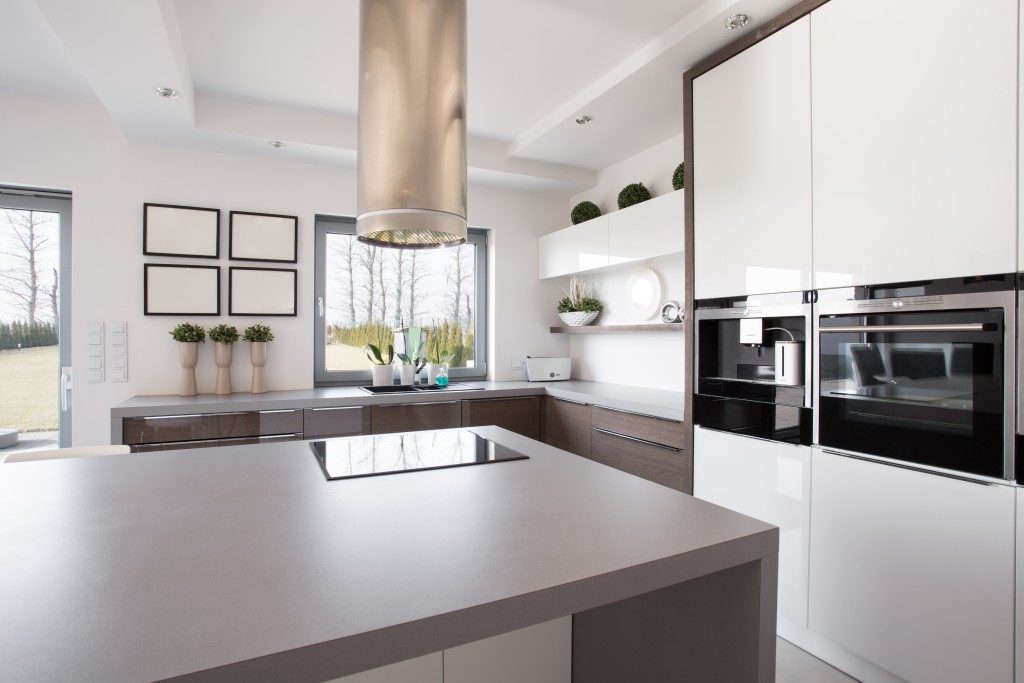- Smart thermostats control temperature remotely, reducing energy consumption and bills while increasing home sustainability.
- Solar panels harness sun power to reduce reliance on traditional energy sources, decreasing carbon footprint and energy bills.
- Smart lighting, including motion-activated and dimmable lights, and smart bulbs, decrease energy waste and enhance home convenience.
- Integrating sustainability and technology in homes reduces carbon footprint and energy costs while increasing property value.
With the advancement of technology and increasing concern for sustainability, it is the perfect time to turn your living space into an eco-friendly and modern home. Integrating technology and sustainability in your home will not only reduce your carbon footprint but also save you money in the long run. This blog post will share tips to help you create a sustainable and modern home that is both environmentally friendly and tech-savvy.
Install Smart Thermostats
Investing in a smart thermostat is the first step towards a sustainable and tech-savvy home. It allows you to preset and control the temperature of your home remotely, making it easy to manage your energy consumption and reduce your energy bills. These thermostats learn your lifestyle patterns and adjust the temperature accordingly, reducing the need for manual adjustment. Here are some tips to follow:
Choose a Thermostat That Is Compatible With Your Heating and Cooling Systems
Ensure that the smart thermostat you opt for is compatible with your home’s heating and cooling systems. This is crucial because not all thermostats work with all types of HVAC systems. Consider your home’s HVAC setup, whether you use a furnace, a heat pump, or central air. Check the specifications of the thermostat you are considering to ensure that it can work effectively with your system.
Consider Features Like Geofencing
Geofencing is a feature that uses your smartphone’s location to control your smart thermostat. When you leave a defined area, the thermostat adjusts to an energy-saving mode. Conversely, as you enter the defined area, it ensures your home is at a comfortable temperature upon your arrival. This functionality eliminates energy wastage and enhances efficiency, contributing significantly to your home’s sustainability.
Look For Energy-Saving Certifications
Energy-saving certifications on smart thermostats serve as an indicator of their efficiency and ability to conserve energy. Look for certifications like the Energy Star label, a widely recognized mark of energy efficiency implemented by the Environmental Protection Agency and the Department of Energy. Devices with these certifications have met strict guidelines for energy efficiency and are more likely to save you money in the long run.

Install Solar Panels
Installing efficient solar panels is another effective way to transform your home into a sustainable and tech-savvy haven. Harnessing the power of the sun, these panels will significantly reduce your reliance on traditional energy sources, decrease your carbon footprint, and lead to substantial savings on your energy bills.
Moreover, modern solar panels are not only efficient but also smart, with features that allow you to monitor and manage energy production right from your smartphone. For instance, some panels come with an app that tracks your energy production and consumption, providing you with real-time data to optimize your energy use.
In some cases, you may even be able to sell excess energy back to the grid, further reducing your energy bills and making your home more sustainable.

Invest in Smart Lighting
Smart lighting is another way to make your home tech-savvy and sustainable. Smart lighting allows you to adjust the light intensity, color, and time settings remotely. You can turn off the lights when you leave a room, reducing unnecessary energy consumption. Here are some things that you can install:
Motion-Activated Lighting
Motion-activated lighting is a fantastic way to conserve energy and elevate your home’s tech-saviness. Using sensors, these lights turn on when movement is detected and switch off when there is none, ensuring you only use light when needed. This feature is particularly beneficial in areas of the house where lights are often left on unintentionally, like hallways or bathrooms, ultimately reducing energy waste and saving on electricity bills.
Dimmable Lights
Dimmable lights offer a versatile lighting solution that can help maximize your home’s energy efficiency. With dimmable lights, you can adjust the brightness level to suit your needs at any given moment, which can significantly reduce energy consumption. For instance, during the day, you can dim the lights to take advantage of natural sunlight, or you can increase the brightness level during the night or on cloudy days.
Smart Bulbs
Smart bulbs take lighting technology a step further. These bulbs can be controlled remotely through your smartphone or smart home system, allowing you to adjust brightness, and color, and even schedule when your lights turn on or off. Some smart bulbs also come with energy-saving features, such as automatic adjustments based on daylight availability. By integrating smart bulbs into your home, you can significantly reduce energy consumption while enhancing the convenience and functionality of your lighting system.
A modern, sustainable, and tech-savvy home is a smart investment in the long run. It reduces carbon footprint and energy bills, increases property value, and provides a comfortable and eco-friendly living space. Integrating technology and sustainability in your home can seem overwhelming, but following the tips discussed in this blog will help you get started. So go ahead and make your home eco-friendly, tech-savvy, and sustainable, and enjoy the benefits for years to come.



